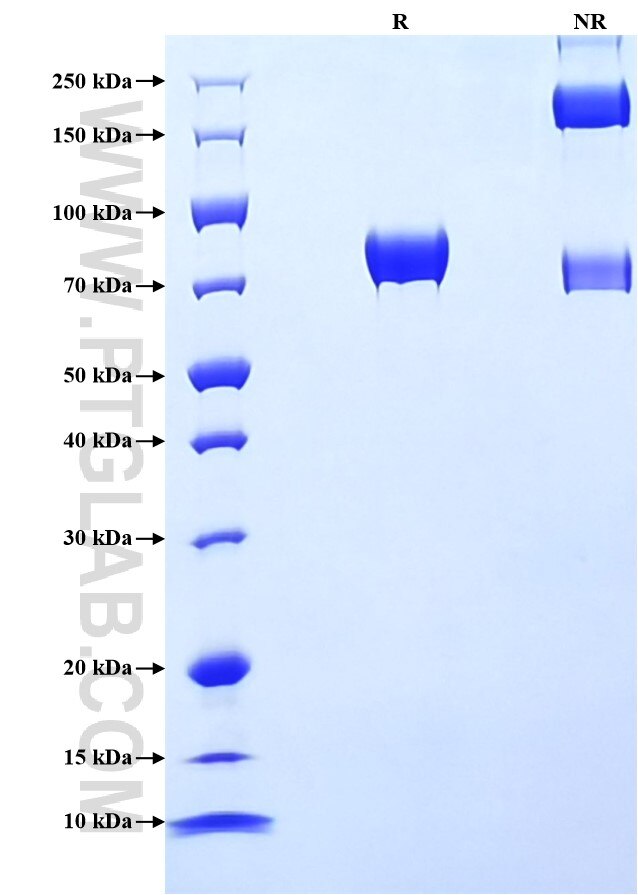Recombinant Human DDR1 protein (rFc Tag)
Species
Human
Purity
>90 %, SDS-PAGE
Tag
rFc Tag
Activity
not tested
Cat no : Eg1675
Validation Data Gallery
Product Information
| Purity | >90 %, SDS-PAGE |
| Endotoxin | <0.1 EU/μg protein, LAL method |
| Activity |
Not tested |
| Expression | HEK293-derived Human DDR1 protein Asp21-Thr416 (Accession# Q08345-1) with a rabbit IgG Fc tag at the C-terminus. |
| GeneID | 780 |
| Accession | Q08345-1 |
| PredictedSize | 70.2 kDa |
| SDS-PAGE | 70-90 kDa, reducing (R) conditions |
| Formulation | Lyophilized from 0.22 μm filtered solution in PBS, pH 7.4. Normally 5% trehalose and 5% mannitol are added as protectants before lyophilization. |
| Reconstitution | Briefly centrifuge the tube before opening. Reconstitute at 0.1-0.5 mg/mL in sterile water. |
| Storage Conditions |
It is recommended that the protein be aliquoted for optimal storage. Avoid repeated freeze-thaw cycles.
|
| Shipping | The product is shipped at ambient temperature. Upon receipt, store it immediately at the recommended temperature. |
Background
DDR1, or Discoidin Domain Receptor 1, is a member of the receptor tyrosine kinase (RTK) family, which plays a significant role in various cellular processes including cell proliferation, adhesion, migration, and extracellular matrix (ECM) remodeling. DDR1 is known for its unique discoidin domain that allows it to bind specifically to certain collagens, initiating downstream signaling pathways that can lead to cell transformation and tumor progression (PMID: 38580164). Abnormal activation of DDR1 is closely associated with the development of various solid tumors. It mediates various signal pathways to stimulate cancer cell invasion, migration, and drug resistance. The extracellular domain of DDR1 enhances the tumor microenvironment by inhibiting tumor T-cell infiltration and promoting tumor growth.
References:
1. Wu D. et al. (2024). Drug Discov Today. 29(5):103975. 2. Liu M. et al. (2024). Eur J Med Chem. 268:116291. 3. Yang L. et al. (2023). Sci Rep. 13(1):5779.

